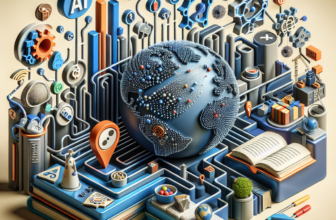Demystifying AI for Image Generation: Understanding the Role of Machine Learning in Creating Visual Content

Demystifying AI for Image Generation: Understanding the Role of Machine Learning in Creating Visual Content
Artificial Intelligence (AI) has gained significant traction in recent years, revolutionizing various industries. One such area where AI has made remarkable progress is image generation. Through the application of machine learning algorithms, AI systems can now generate pictures, paintings, and even deepfake videos that closely resemble human creations. In this article, we will demystify AI for image generation, exploring its underlying concepts, techniques, and potential impact on visual content creation.
The Role of Machine Learning in AI Image Generation
Machine learning is a subset of AI focused on enabling machines to learn and make decisions based on data without explicit programming. In the context of image generation, machine learning algorithms analyze vast amounts of data to understand the patterns, styles, and characteristics of different visual elements. These algorithms can then generate new images based on the information acquired from the training data.
Generative Adversarial Networks (GANs) are a popular type of machine learning model used for image generation. GANs consist of two neural networks: a generator network and a discriminator network. The generator network creates images, while the discriminator network evaluates the authenticity of the generated images. Through an iterative process, the generator network improves its ability to create increasingly realistic and complex images, aiming to fool the discriminator network. This competition between the generator and discriminator networks results in the generation of high-quality images.
Applications of AI for Image Generation
The ability of AI to generate images has implications across various industries. Here are some significant applications:
1. Design and Advertising
AI can assist designers in creating unique and visually appealing designs quickly. By analyzing design patterns and styles, AI algorithms can generate multiple design options, saving time and effort. Furthermore, AI-generated images can be used in advertising campaigns, enhancing visual impact and attracting consumers.
2. Entertainment and Gaming
Video games and animated movies often require the creation of vast amounts of visual content. AI can aid in generating realistic scenes, characters, and special effects, elevating the overall gaming and entertainment experiences.
3. Fashion and Retail
AI-generated images can be used for virtual clothing try-ons, eliminating the need for physical inventory. Customers can visualize how different clothes will look on them without physically trying them on, leading to enhanced online shopping experiences.
4. Content Creation
AI-based image generation also has potential applications in content creation for blogs, websites, and social media. Bloggers and content creators can utilize AI algorithms to generate relevant and visually appealing images that align with the content’s tone and context.
Frequently Asked Questions (FAQs)
Q1. Is AI capable of creating original artwork?
While AI can generate beautiful and realistic images, it is important to note that AI-generated art is created based on patterns and styles learned from existing data. AI lacks the subjective experiences and emotions that human artists possess, making it challenging for AI to create truly original artwork.
Q2. Can AI-generated images be used commercially?
Yes, AI-generated images can be used commercially, but the legal and ethical considerations need to be taken into account. It is essential to ensure that the generated images do not infringe upon copyright or intellectual property rights.
Q3. How can AI-generated images be distinguished from human-created images?
Distinguishing between AI-generated and human-created images can be challenging, particularly as AI algorithms improve. However, certain imperfections or abnormalities in AI-generated images might serve as indicators of their origin. Moreover, watermarking or tagging AI-generated images can help in differentiation.
Q4. Are there any risks associated with AI-generated visual content?
AI-generated visual content can potentially be misused for malicious purposes, such as deepfakes or propaganda. Stringent ethical guidelines and regulations need to be established to mitigate these risks and prevent the misuse of AI-generated images.
Q5. How can businesses leverage AI for image generation?
Businesses can employ AI algorithms and tools specifically designed for image generation. These tools can aid in various aspects, such as design, advertising, content creation, and enhancing virtual experiences. It is crucial for businesses to understand the potential of AI and explore its integration within their existing processes.
In conclusion, AI for image generation is a rapidly evolving field with tremendous potential. Machine learning and specifically GANs play a pivotal role in enabling AI systems to create visual content that closely resembles human creations. The applications of AI for image generation are vast and extend across various industries, empowering businesses and enhancing user experiences.







